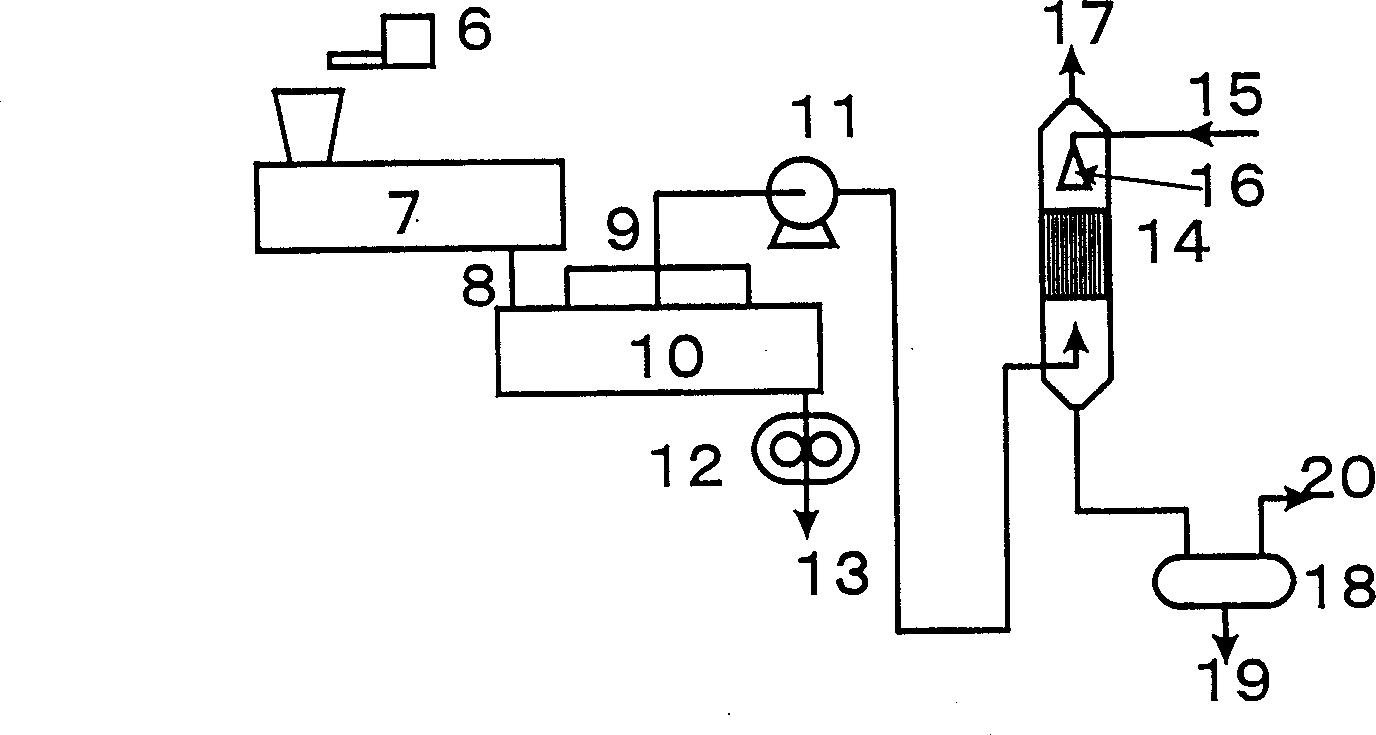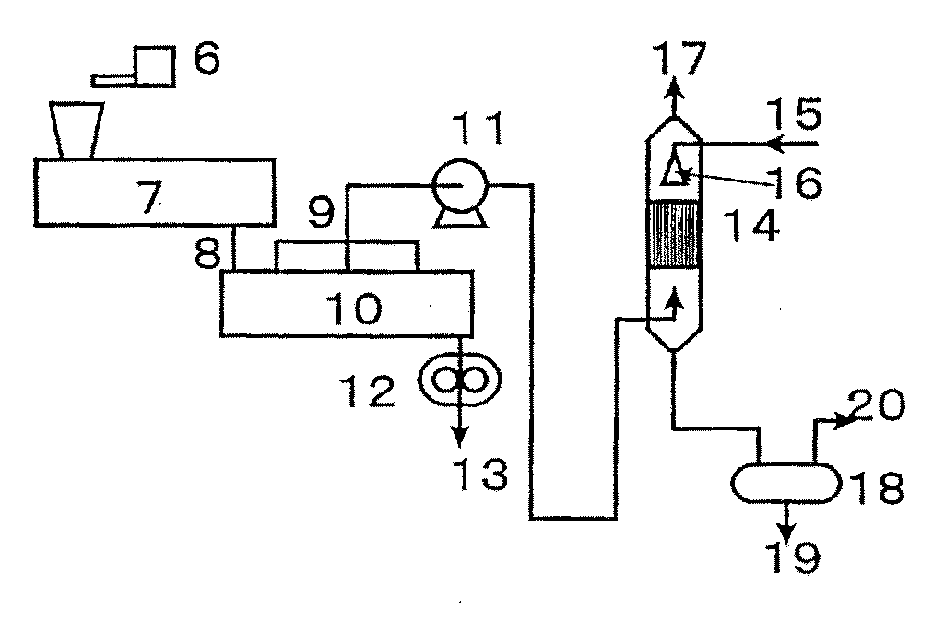Method for treaitng resin composition
A technology of resin composition and treatment method, applied in the preparation method of halide, chemical instrument and method, preparation of bromide, etc., can solve the problems of no decomposition efficiency, no description of thermoplastic resin, etc.
- Summary
- Abstract
- Description
- Claims
- Application Information
AI Technical Summary
Problems solved by technology
Method used
Image
Examples
Embodiment 1,2
[0084] Embodiment 1, 2 and comparative example 3, are the comparison of the occasion where the metal compound is mixed in the HIPS containing decabromodiphenyl ether and the occasion where the metal compound is not mixed therein; embodiment 1 and comparative example 1, 2 are recovery systems ( Kneader) comparison of decompression effect with no decompression effect. The reaction condition is that the effective treatment surface area is 300m 2 , specific energy 150MJ / m 3 .
Embodiment 3
[0086] Examples 3, 4 and Comparative Example 4 show the effect of adding a hydrotreating agent. Example 3 is to mix 30wt% of high boiling point (≥450°C) mineral oil into every 70wt% of the model resin composition. Since the mineral oil is liquid, as a pre-mixing, an additional processing operation is performed on a ZSK (φ25mm) twin-screw mixer made by the German company ワ-ナ- to make a resin composition, and then the resulting resin composition is put into a preheating kneading extrusion Getting out of the plane. The specific energy at this moment is adjusted to make the experience of the material in the above two machines add up to be the same as in Example 3. In Comparative Example 4, 90 wt% of PP and 10 wt% of the model resin composition were added and mixed. The reaction condition is that the effective treatment surface area is 300m 2 , specific energy 150MJ / m 3 .
Embodiment 6-10 and comparative example 5
[0088] Examples 6-10 and Comparative Example 5 are comparisons of the effects obtained by various effective treatment surface areas and specific energies.
[0089] Tables 1 to 3 list the results of the above-mentioned Examples and Comparative Examples.
[0090] Example 1
[0091] Example 3
[0092] Note) nd: Not detected.
[0093] project
[0094] Note) nd: Not detected
PUM
| Property | Measurement | Unit |
|---|---|---|
| boiling point | aaaaa | aaaaa |
Abstract
Description
Claims
Application Information
 Login to View More
Login to View More - R&D
- Intellectual Property
- Life Sciences
- Materials
- Tech Scout
- Unparalleled Data Quality
- Higher Quality Content
- 60% Fewer Hallucinations
Browse by: Latest US Patents, China's latest patents, Technical Efficacy Thesaurus, Application Domain, Technology Topic, Popular Technical Reports.
© 2025 PatSnap. All rights reserved.Legal|Privacy policy|Modern Slavery Act Transparency Statement|Sitemap|About US| Contact US: help@patsnap.com



